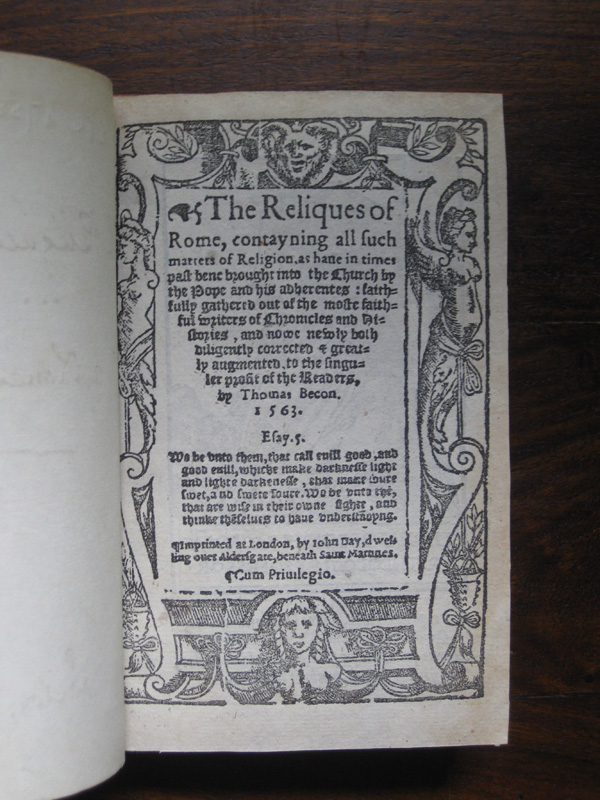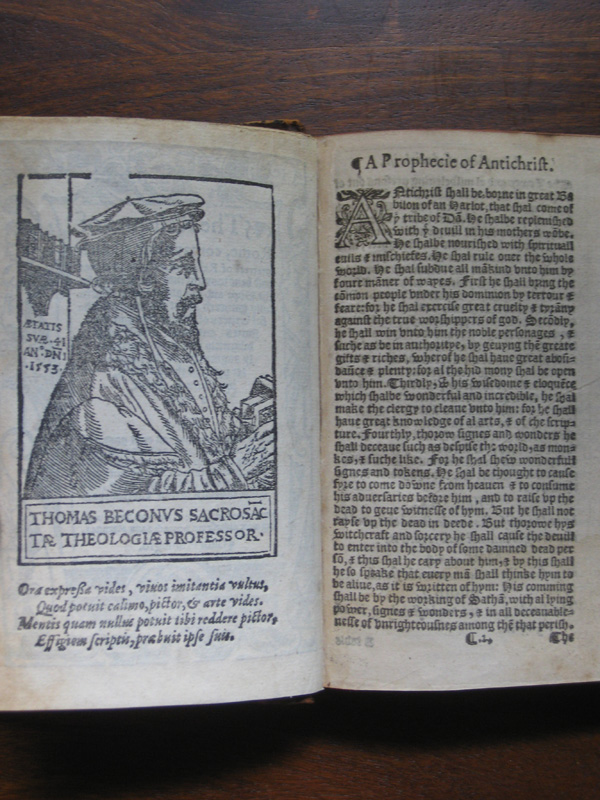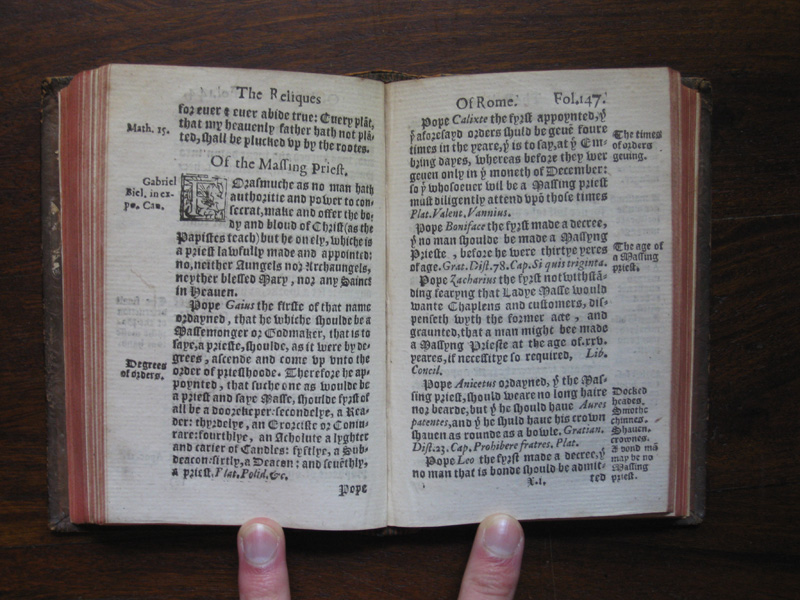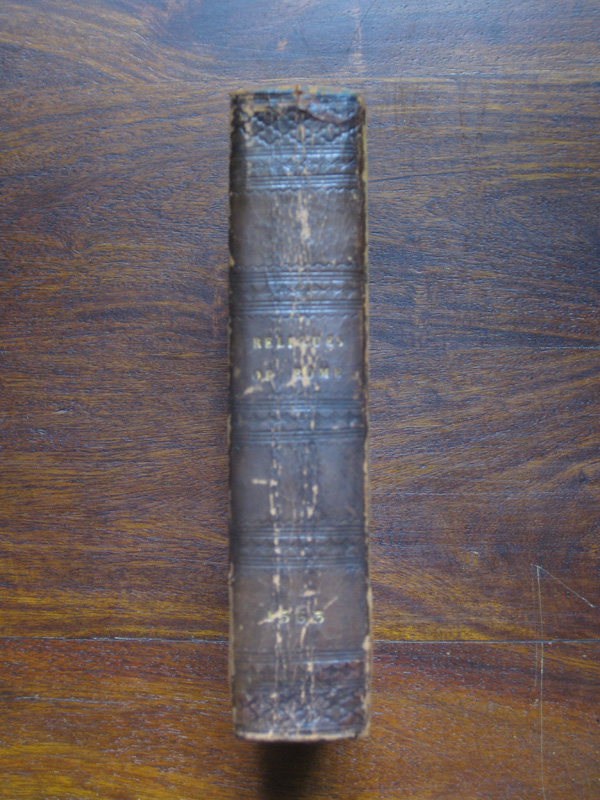Becon, Thomas. The Reliques of Rome, containing all such matters of Religion, as haue in times past been brought into the Church by the Pope and his adherents. John Day, London, 1563. Small 8vo (144 x 96 x 31mm). STC 1755.
This “newly corrected and greatly augmented” edition was published by Day in the same year as the first edition of John Foxe’s Actes and monuments; Day had published the first edition of the work c.1560. Indeed much expanded, the edition consumes 292 octavo leaves in comparison to the earlier edition’s similarly formatted 130. Becon, whose The sycke mans salue became an early modern devotional bestseller, wrote this work after having “somewhat more sharpened [his] pen in some place against antichrist and his Babylonical brood” while in exile during the reign of Mary I. Similar in many ways to works such as John Bale’s Acta romanorum pontificum and The actes of Englyshe votaryes, Reliques consists of a comprehensive catalog detailing Roman Catholic beliefs and practices that Becon argues were not only against the teachings of Scripture, but also indicative of the Antichrist itself.
The present copy, bound in an early-to-mid 19th-century smooth calf with blind decoration and a gilt title and date on the spine, collates complete minus the title leaf, which has been provided in an expert facsimile on paper nearly identical to that in the rest of the volume. So skillfully executed, the title leaf is likely to pass as original unless directly compared to another copy. The marginal notes are intact and the leaves are overall very clean, bright, and crisp, with only occasional very light dampstains. The page at signature O5v contains some somewhat cropped ink marginal annotations in what appears to be an early 18th-century hand and R4v contains an underlined passage; the book contents are otherwise unmarked. The hinges and extremities are somewhat rubbed, but the binding remains sound and the copy very readable. The text block has smooth red edges and plain endpapers. On the inside of the front cover is mounted the presentation bookplate of John Jackson, via John Gordon McMinnies, to the Warrington Museum and Library, dated October 1875.
All said, this is a very nice copy of an understudied work by an important reformer, one appealing not only to those interested in the English Reformation, but also to students and collectors of one of the most important early modern printers, John Day. SOLD





